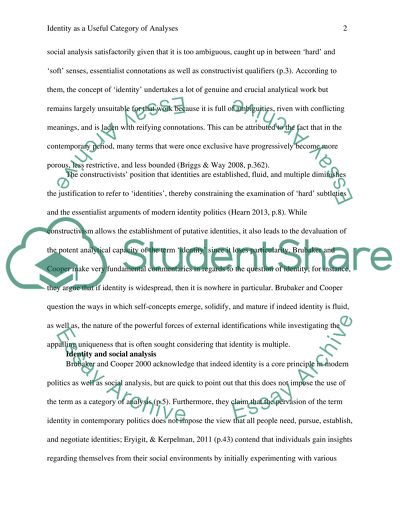Cite this document
(“Brubaker and Cooper (2000) have argued that while 'identity' is Essay”, n.d.)
Brubaker and Cooper (2000) have argued that while 'identity' is Essay. Retrieved from https://studentshare.org/sociology/1498428-brubaker-and-cooper
Brubaker and Cooper (2000) have argued that while 'identity' is Essay. Retrieved from https://studentshare.org/sociology/1498428-brubaker-and-cooper
(Brubaker and Cooper (2000) Have Argued That While 'identity' Is Essay)
Brubaker and Cooper (2000) Have Argued That While 'identity' Is Essay. https://studentshare.org/sociology/1498428-brubaker-and-cooper.
Brubaker and Cooper (2000) Have Argued That While 'identity' Is Essay. https://studentshare.org/sociology/1498428-brubaker-and-cooper.
“Brubaker and Cooper (2000) Have Argued That While 'identity' Is Essay”, n.d. https://studentshare.org/sociology/1498428-brubaker-and-cooper.


